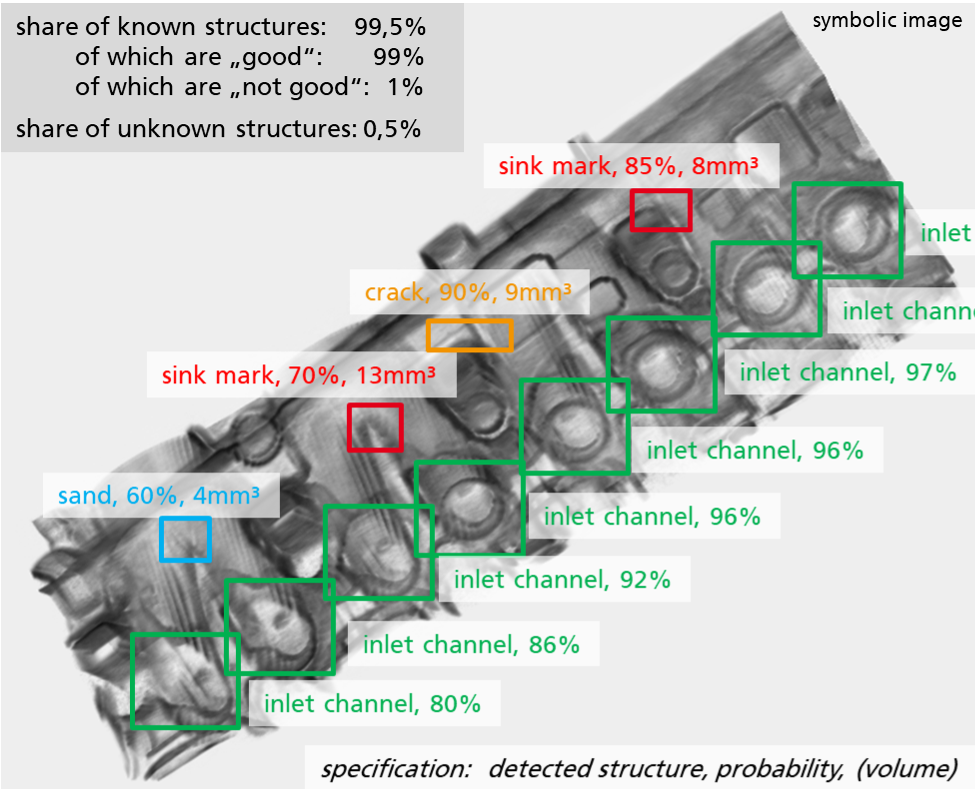Quality assurance in casting technology through AI-based anomaly detection in computed tomography images.
The quality assurance of primary-formed semi-finished products and components is associated with high costs and time expenditure for manufacturing companies due to the complex, three-dimensional geometries and shapes. The quality assurance methods used range from visual inspections and leak tests for cavities to three-dimensional imaging methods using X-rays and computer tomography. Computer tomography, in particular, is an inspection method with a high information density. However, making this usable in operational reality is associated with high costs and time expenditure: Time-consuming inspection of component images by experts for the identification of defects, high number of images of sample components for the generation of digital positive images as well as their necessary updating in case of component changes.
The goal of the Anomaly AI project is to develop an approach using Artificial Intelligence (AI) to identify anomalies in cast components to save both cost and time. Anomaly detection based on AI offers the potential to increase the reliability of identifying defects as well as reduce the cost of using CT equipment in quality assurance by bypassing the need for a positive image.
